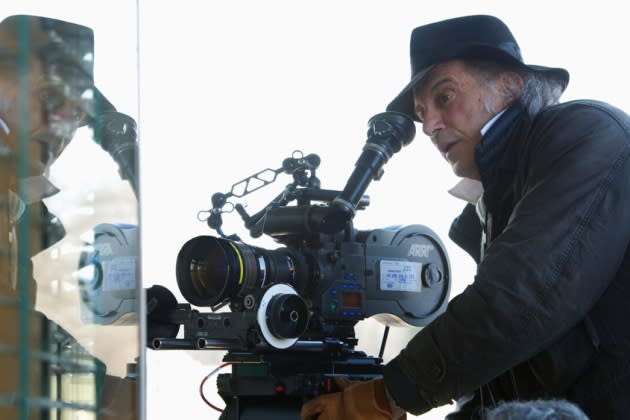Cinematographer Ed Lachman Had to Exit Todd Haynes Drama ‘May December’ After Breaking His Hip

Cinematographer Ed Lachman was meant to reunite with his frequent collaborator and director Todd Haynes on “May December,” starring Natalie Portman, but he broke his hip. “I just came home from Chile doing a film with Pablo Larrain, and I unfortunately, I broke my hip.” Lachman says.
Instead of joining Haynes and Portman in Savannah, Ga., where the film is currently in production, Lachman is doing well and recovering in Mallorca. He spoke with Variety about his recent projects and the surge of shooting on film after being honored at the recent Evolution Mallorca International Film Festival.
More from Variety
Gotham Awards to Honor Nicole Kidman, Cinematographer Ed Lachman
Telluride: 'Wonderstruck' Lenser Ed Lachman Reflects on His Career
The festival presented Lachman with its inaugural Evolution Cinematography ICON Award recognizing his work over four decades across films such as “Carol,” “Far From Heaven” and “Erin Brockovich.”
Your latest project, “Louis Armstrong’s Black and Blues” uses a lot of archival images and voiceover to tell this story. What was your approach there?
Sacha Jenkins directed the film and I came in to fill in certain areas. That film for me is in the editing. I did things in super-8, but the strength was in how the images were used, and how Louis Armstrong created his images. He made these diaries with imagery that he cut out of newspapers, magazines, and photographs. Sacha extracted them and animated them.
We spoke last year about your work with Todd Haynes on “The Velvet Underground,” but how does shaping a documentary feature differ from doing a narrative feature?
There’s no difference. In documentaries, you’re leading the storytelling because you’re responding to the material on a one-to-one basis. With narrative, you’re interpreting stories through the script. You’re creating the script for a documentary. But there’s such a crossover between using what’s in front of you and not recreating it and the narrative form. Documentary is not a secondary form to features. It’s how you use the images and I’m interested in how we tell stories through images and portray thoughts, feelings and emotions.
What about your thoughts on how audiences are consuming content? What do you think about people who watch movies on their phones?
When I work on a film, I want them to see it on a screen, but this is a certain kind of reality and I can’t dictate how they receive it. I can care about how I create the images, that there’s a psychological and poetic authenticity to the image. There was this criticism in the ‘50s from the cinemas about people watching movies on their TV sets. So, it’s gone from televisions to iPhones. They’re never going to replace the stories we need to tell however we distribute them. People are always going to need stories to understand their lives. Stories are a reflection of the world we live in or the world we don’t want to live in.
I found it interesting that Kodak can’t keep up with the demand for film. How do you feel about seeing that surge?
Todd and I have always been supportive of film. Time has come around and people understand the way they look and film. If you look at the number of films that have won the Academy Award, it’s something like 80% of those winners were generated on film. Film is a different look for me. Film is closer to the way is I like and it’s more anthropomorphic. There’s context to the way it’s created and exposed. The grain structure has depth to it that digital doesn’t. I don’t think all stories have to be told on film and I don’t think all stories have to be shown digitally, but people do want the option to use whatever tools exist to tell their stories. Young people want to use film because they haven’t used it and so they want to explore it. But I think that there’s a discipline in using film that’s lost digitally, and the people that have worked in film, when they shoot digitally can relate to how films are made. You can’t shoot everything and think you have a story. With film, you have to be very selective.
What have you enjoyed recently?
I was just at the New York Film Festival, and I saw several interesting younger filmmakers. I watched “Stonewalling” by Huang Ji and Ryuji Otsuka, it’s a narrative with a three-man crew and it was remarkable. I’m always looking for the way people tell stories in different ways, but also how they’re challenging themselves to find the language to tell the story. That’s why I love working with Todd because he’s always and putting forth different ideas about how to tell a story visually because of the content of the material. I find young filmmakers are willing to take that chance, because sometimes they don’t know what problems they’ll get themselves into, and so they are more adventuresome.
Best of Variety
Sign up for Variety’s Newsletter. For the latest news, follow us on Facebook, Twitter, and Instagram.

 Yahoo Movies
Yahoo Movies 